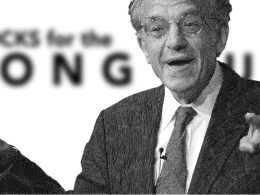Neither economic growth nor the demand for loans are a simple function of interest rates. If consumers wish to reduce their debt, and companies do not have a desirable menu of potential investments, there is little benefit in reducing interest rates by another percentage point, because the precise cost of borrowing is not the issue. The current thinking by the FOMC seems to treat individual economic actors as little unthinking toy blocks that can be moved into the desired position at will. Instead, our policy makers should be carefully examining the constraints and interests that are important to people and act in a way that responsibly addresses those constraints.
A good example of this "toy block" thinking is the notion of forcing individuals to spend more and save less by increasing people's expectations about inflation (which would drive real interest rates to negative levels). As I noted last week, if one examines economic history, one quickly discovers that just as lower nominal interest rates are associated with lower monetary velocity, negative real interest rates are associated with lower velocity of commodities (hoarding). Look at the price of gold since 1975. When real interest rates have been negative (even simply measured as the 3-month Treasury bill yield minus trailing annual CPI inflation), gold prices have appreciated at a 20.7% annual rate. In contrast, when real interest rates have been positive, gold has appreciated at just 2.1% annually. The tendency toward commodity hoarding is particularly strong when economic conditions are very weak and desirable options for real investment are not available. When real interest rates have been negative and the Purchasing Managers Index has been below 50, the XAU gold index has appreciated at an 85.7% annual rate, compared with a rate of just 0.1% when neither has been true. Despite these tendencies, investors should be aware that the volatility of gold stocks can often be intolerable, so finer methods of analysis are also essential.
Quantitative easing promises to have little effect except to provoke commodity hoarding, a decline in bond yields to levels that reflect nothing but risk premiums for maturity risk, and an expansion in stock valuations to levels that have rarely been sustained for long (the current Shiller P/E of 22 for the S&P 500 has typically been followed by 5-10 year total returns below 5% annually). The Fed is not helping the economy - it is encouraging a bubble in risky assets, and an increasingly unstable one at that. The Fed has now placed itself in the position where small changes in its announced policy could have disastrous effects on a whole range of financial markets. This is not sound economic thinking but misguided tinkering with the stability of the economy.
Implications for Policy
In 1978, MIT economist Nathaniel Mass developed a framework for the liquidity trap based on microeconomic theory - rational decisions made at the level of individual consumers and firms. The economic dynamics resulting from the model he suggested seem strikingly familiar in the context of the recent economic downturn. They offer a useful way to think about the current economic environment, and appropriate policy responses that might be taken.
"The theory revolves around a set of forces that for a period of time promote cumulative expansion of capital formation, but eventually lead to overexpansion of capital production capacity and then into a situation where excess capacity strongly counteracts expansionary monetary policies.
"The capital boom followed by depression runs much longer than the usual short-term business cycle, and is powerfully driven by capital investment interactions. The weak impact of monetary stimulus on real activity arises because additional money has little force in stimulating additional capital investment during a period of general overcapacity. Instead, money is withheld in idle balances when profitable investment opportunities are scarce."
In one illustration of the model, Mass introduces a monetary stimulus much like what Alan Greenspan engineered following the 2000-2002 recession (which was also preceded by an unusually large buildup of excess capacity, leading to an investment-led downturn). Though Greenspan's easy-money policy didn't prompt a great deal of business investment, it did help to fuel the expansion in another form of investment, specifically housing. Mass describes the resulting economic dynamics:
"Following the monetary intervention, relatively easy money provides a greater incentive to order capital... But now the overcapacity that characterizes the peak in the production of capital goods reaches an even higher level than without the stimulus. This overcapacity eventually makes further investment even less attractive and causes the decline in capital output to proceed from a higher peak and at a faster pace. Due to persistent excess capital which cannot be reduced as fast as labor can be cut back to alleviate excess production, unemployment actually remains higher on the average following the drop in production."










